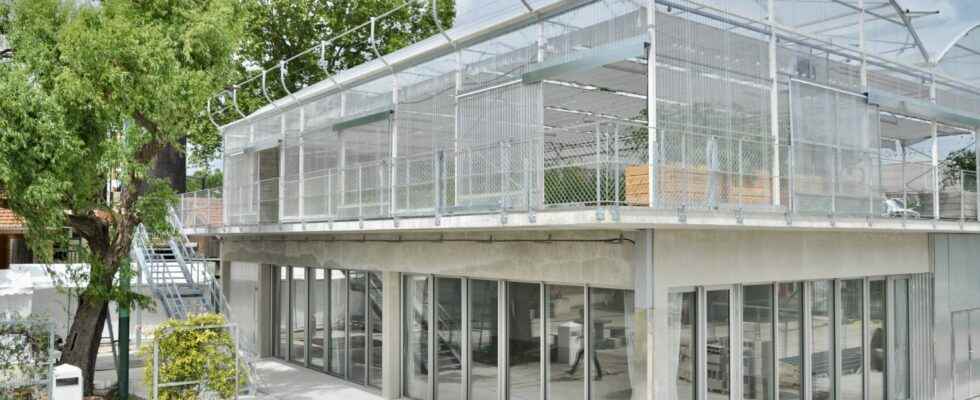At the beginning of July, the air smells of freshly cut basil and zucchini flowers. At the entrance to the open farm in Saint-Denis (Seine-Saint-Denis), Annie is finishing installing the horned Andean tomatoes she has just picked. One of the first harvests from the new greenhouse inaugurated the previous week. In the heart of Saint-Denis, a suburb of Paris 92% of which is occupied by urban, industrial, commercial or communication networks, this green setting still resists concrete.
The Open Farm of Gally is even proud to be the last market gardening operation at the gates of Paris. The place, already known for its educational role, has just added a new tool to its inventory: an experimental greenhouse. Objective ? Strengthen urban agriculture, fight against energy losses and give a boost to the economic fabric.
Tomatoes on the roof of a shed
A group of six onlookers climb the steel staircase against the wall of the Halle. Because it is on the roof of this shed that the new greenhouse is located. Reached the top, they circulate between the rows of tomatoes, go around the bumblebee boxes (natural pollinators) until they discover an unobstructed view of the Pleyel tower. Nicolas Brulard, project manager, draws their attention to the ingenious furniture: “The plants are rooted in delimited blocks of earth, in order to allow the mobility of the rows. It is relatively light, it can be moved by hand” , he says. Beyond the atypical image of this piece of nature that stands out against a horizon of buildings, the challenge is immense: to create a synergy of warmth. The greenhouse creates a kind of insulating bubble on the roof of the farm. By recovering part of the heat from the ground floor, and with the addition of a passive concrete wall installed on the upper floor of the greenhouse which redistributes the heat accumulated during the day, the system will allow the cultivation of some two tons of tomatoes every year.
“But it is an even broader objective of synergy that guides us: how to create partnerships, almost symbioses, between the building sector and that of agriculture? Our greenhouse is part of the European project GROOF (Greenhouse to reduce CO2 on roofs*) which aims to conduct studies to reduce CO2 emissions in the construction and agricultural sectors by combining energy sharing and local food production”, details Caroline Robin, manager of the Open Farm of Saint-Denis. Financed 60% by European funds, the greenhouse is the only French representative of this GROOF program, which includes three other study sites, in Belgium, Germany and Luxembourg.
An economic logic to prove
The field of application is wide: the specialists estimate at 30%, on average, the heat lost through the roof of the buildings. The idea of revaluing these calories by feeding cities appeals. But the costs, them, slow down the passages to the act. “For the moment, few greenhouse projects on a roof or urban farms are based on a proven and viable economic logic. It is GROOF’s objective to study, in full scale, the profitability and technical feasibility .
If real energy and CO2 capture savings are demonstrated, our greenhouse project will set an example nationally and internationally”, enthuses Xavier Laureau, director of Les Fermes de Gally. another step in the greening of cities.
*Greenhouse to reduce CO2 on rooftops, in French.
